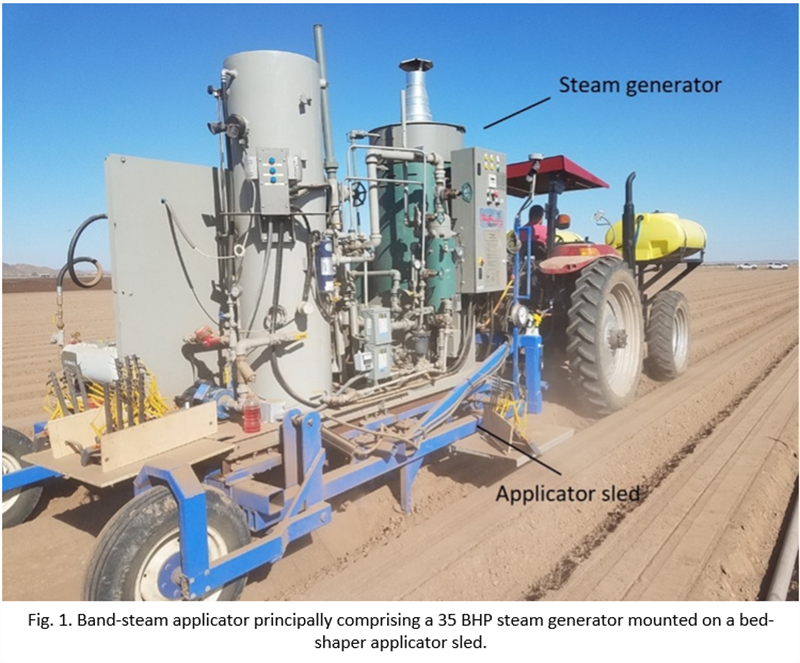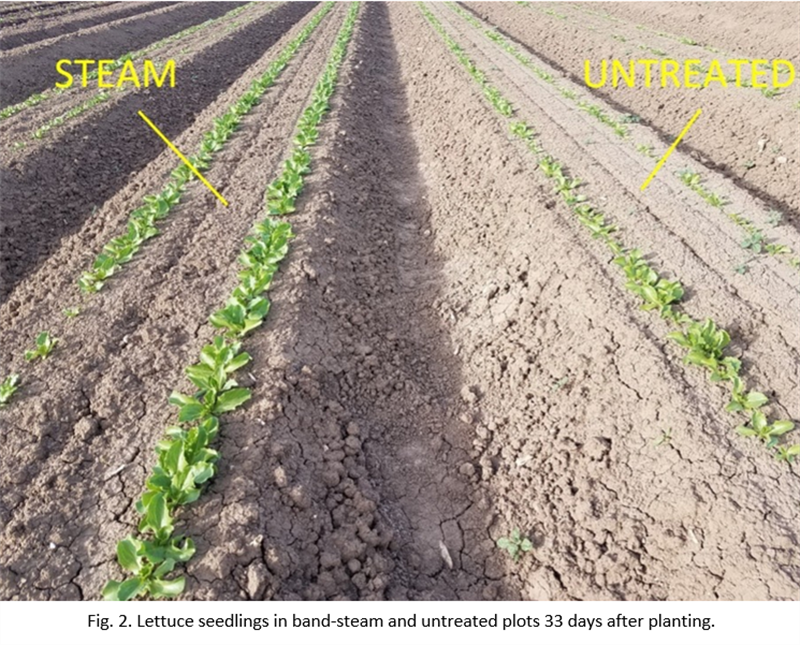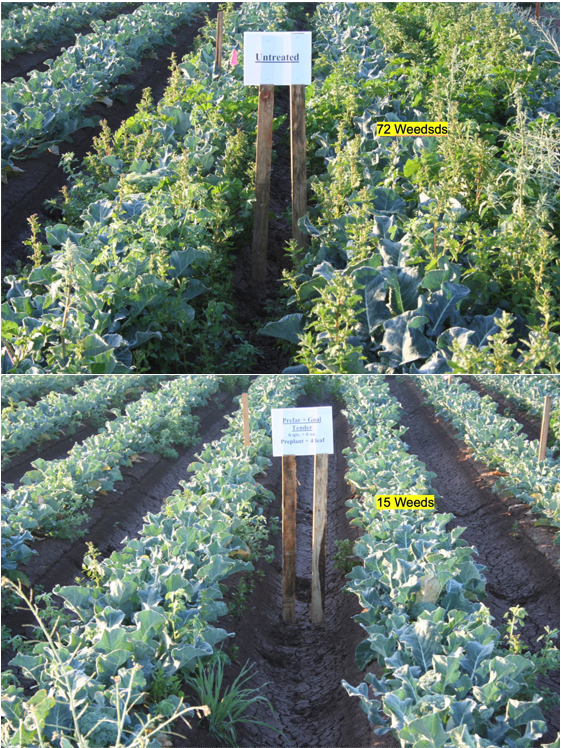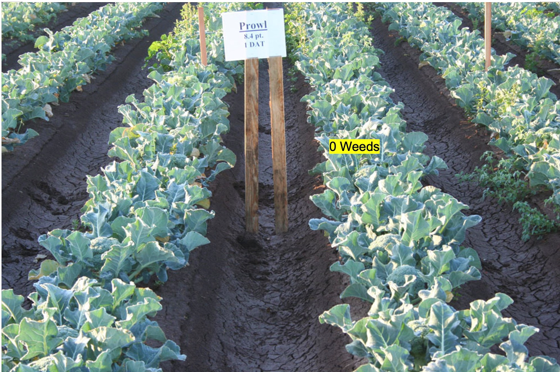
It’s unfortunately a very great season to be a plant pathologist…
We have confirmed the first sample of Fusarium wilt on lettuce submitted to the Yuma Plant Health Clinic from Yuma County. The stunted seedlings looked like any other typical case of damping-off at the seedling stage. When plated on culture media, subsequently confirmed Fusarium colonies grew abundantly from the declining plant tissues. If you’re not already on guard and scouting, this is a warning that Fusarium is active in Yuma County.
Adding on to this early alert, we’ve received a surge of submissions of young brassicas to the clinic. Several severely wilted and declining plants from around Yuma County have cultured positive for Pythium, likely as an opportunistic invader coming in on the back of all the early-season rain that brought stress to seeds and young transplants. Growers may want to consider oomycides, but only if the seedling disease is first confirmed to be Pythium. Remember, many seedling diseases caused by true fungi are indistinguishable from those caused by Pythium.
If you have any concerns regarding the health of your plants/crops please consider submitting samples to the Yuma Plant Health Clinic for diagnostic service or booking a field visit with me:
Chris Detranaltes
Cooperative Extension – Yuma County
Email: cdetranaltes@arizona.edu
Cell: 602-689-7328
6425 W 8th St Yuma, Arizona 85364 – Room 109
In previous articles (Vol. 11 (13), Vol. 11 (20), Vol. 11(24)), I’ve discussed using band-steam to control plant diseases and weeds. Band-steaming is where steam is used to heat narrow strips of soil to temperature levels sufficient to kill soilborne pathogens and weed seed (>140 °F for > 20 minutes). The concept is showing good promise. This past season, three trials were conducted examining the efficacy of using steam for disease and weed control in Yuma, AZ. In the studies, steam was applied in a 4-inch-wide by 2-inch-deep band of soil centered on the seedline using a prototype band-steam applicator (Fig.1). The band-steam applicator is principally comprised of a 35 BHP steam generator mounted on top of an elongated bed shaper. The apparatus applies steam via shank injection and from cone shaped ports on top of the bed shaper.
Trial results were very encouraging as the prototype applicator was able to raise soil temperatures to target levels (140°F for >20 minutes) at viable travels speeds of 0.75 mph. Steam provided better than 80% weed control and significantly lowered hand weeding time by more than 2 hours per acre (Table 1). Results also showed that Fusarium colony forming units (CFU) were reduced from 2,600 in the control to 155 in the 0.75 mph and 53 in the 0.5 mph treatments, respectively (a more than 15-fold reduction). A significant difference in Fusarium wilt of lettuce disease incidence was not found, however disease infection at the field site was low (< 2%) and differences were not expected. At 0.5 mph, fuel costs were calculated to be $238/acre which was considered reasonable and consistent with the values reported by Fennimore et al. (2014).

An unexpected finding was that plants in steam treated plots appeared to be healthier and more vigorous than untreated plots (Fig. 2). This trial is still in progress and it will be interesting to see if this improved early growth translates into increases in crop yield.
In summary, early trial results are showing good promise for use of band-steam as a non-herbicidal method of pest control. We plan on conducting further trials in this multi-year study. If you are interested in evaluating the device on your farm and being part of the study please contact me. We are particularly interested in fields with a known history of Fusarium wilt of lettuce and/or Sclerotinia lettuce drop that will be planted to iceberg or romaine lettuce.
As always, if you are interested in seeing the machine operate or would like more information, please feel free to contact me.
Acknowledgements
This work is supported by Crop Protection and Pest Management grant no. 2017-70006-27273/project accession no. 1014065 from the USDA National Institute of Food and Agriculture, the Arizona Specialty Crop Block Grant Program and the Arizona Iceberg Lettuce Research Council. We greatly appreciate their support. Any opinions, findings, conclusions, or recommendations expressed in this publication are those of the author(s) and do not necessarily reflect the view of the U.S. Department of Agriculture.
A special thank you is extended to Mellon Farms for allowing us to conduct this research on their farm.
References
Fennimore, S.A., Martin, F.N., Miller, T.C., Broome, J.C., Dorn, N. and Greene, I. 2014. Evaluation of a mobile steam applicator for soil disinfestation in California strawberry. HortScience 49(12):1542-1549.


Click link below or picture to see the band-steam and co-product applicator in action!
Weeds are one of the most visible of all agricultural pests. They can’t move or hide and once established often stick up over the crop. Just one weed in a 10 acre field is annoying to look at. With insects and diseases, the damage is often more visible than the pest. That is not the case with weeds. A moderate weed infestation is approximately 10 weeds per square foot. If a herbicide produces 90% control, that leaves 1 weed per square foot or 43 weeds per acre. Without an untreated check, this can look like the herbicide failed! It is easy to leave an untreated spot in a field and it is well worth doing. Many applicators do so unintentionally because of skips, powerlines and other causes. They help determine crop injury and weed control. Here are some examples of what various levels of control looked like from one of our cole crop trials:


This time of year, John would often highlight Lepidopteran pests in the field and remind us of the importance of rotating insecticide modes of action. With worm pressure present in local crops, it’s a good time to revisit resistance management practices and ensure we’re protecting the effectiveness of these tools for seasons to come. For detailed guidelines, see Insecticide Resistance Management for Beet Armyworm, Cabbage Looper, and Diamondback Moth in Desert Produce Crops .
VegIPM Update Vol. 16, Num. 20
Oct. 1, 2025
Results of pheromone and sticky trap catches below!!
Corn earworm: CEW moth counts declined across all traps from last collection; average for this time of year.
Beet armyworm: BAW moth increased over the last two weeks; below average for this early produce season.
Cabbage looper: Cabbage looper counts increased in the last two collections; below average for mid-late September.
Diamondback moth: a few DBM moths were caught in the traps; consistent with previous years.
Whitefly: Adult movement decreased in most locations over the last two weeks, about average for this time of year.
Thrips: Thrips adult activity increased over the last two collections, typical for late September.
Aphids: Aphid movement absent so far; anticipate activity to pick up when winds begin blowing from N-NW.
Leafminers: Adult activity increased over the last two weeks, about average for this time of year.







